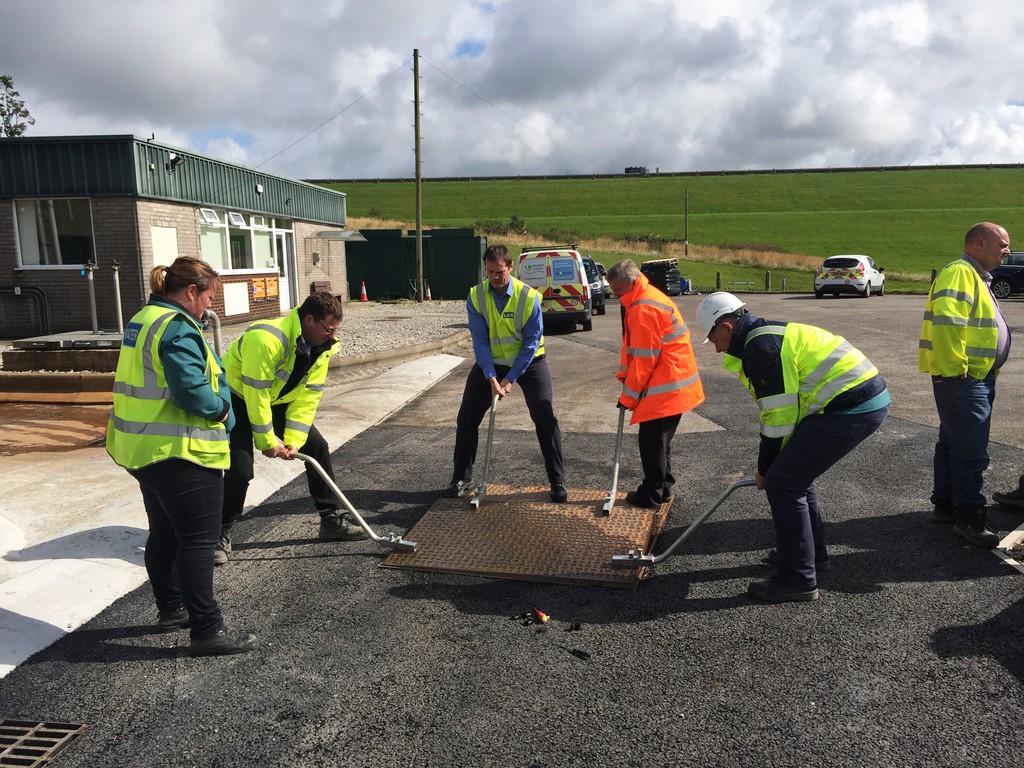
 |
Mark Sennett
Managing Editor |
 |
Kelly Rose
Editor |
| Home> | Handling & Storing | >Safer Manual Handling | >Manual handling covered |
Manual handling covered
14 March 2018
Due to their position and weight the removal and replacement of heavy concrete and metal manhole and trench covers makes them an ideal culprit for back and finger injuries which can be compounded if the covers corrode or crumble.

David Holmes, Fibrelite’s Technical Director explains “one or two people can move any Fibrelite cover quickly and easily without risk of back injury or crushed fingers, at any load rating.”
While the lightweight and corrosion-free properties of composites go a long way towards decreasing manual handling injuries, Fibrelite wanted to eliminate them altogether. They identified stooping as an additional cause of injury. To solve this, they created an ergonomically designed lifting handle, allowing users to safely remove and replace the covers keeping the load close to the waist, avoiding stooping or bending their backs. This allows users to adhere to the advised lifting technique from both the HSE[3] and NHS[4].
Fibrelite also considered the safety of people and vehicles passing over the covers. Unlike metal and concrete covers that can become hazardous when wet or worn, Fibrelite covers have been engineered to provide a safe walking and driving surface, tested to be equivalent to modern high-grade road surfaces.
According to Ian Thompson Fibrelite’s Managing Director, there has been “a dramatic growth in the number of industries reducing their health and safety risks by using composites, both at new build facilities where Fibrelite covers are specified from the outset and at existing facilities modernising their previously installed covers”.
- Ergonomic trench covers
- Composite access covers
- Concrete and composites partnership
- Safer access covers
- Composites reach the Antarctic
- Lightweight composites
- Manhole covers reduce injury
- Magnox specifies Fibrelite
- Made-to-measure composite trench covers
- Fibrelite design and engineer retrofit replacement for heavy cast iron recess access covers

























